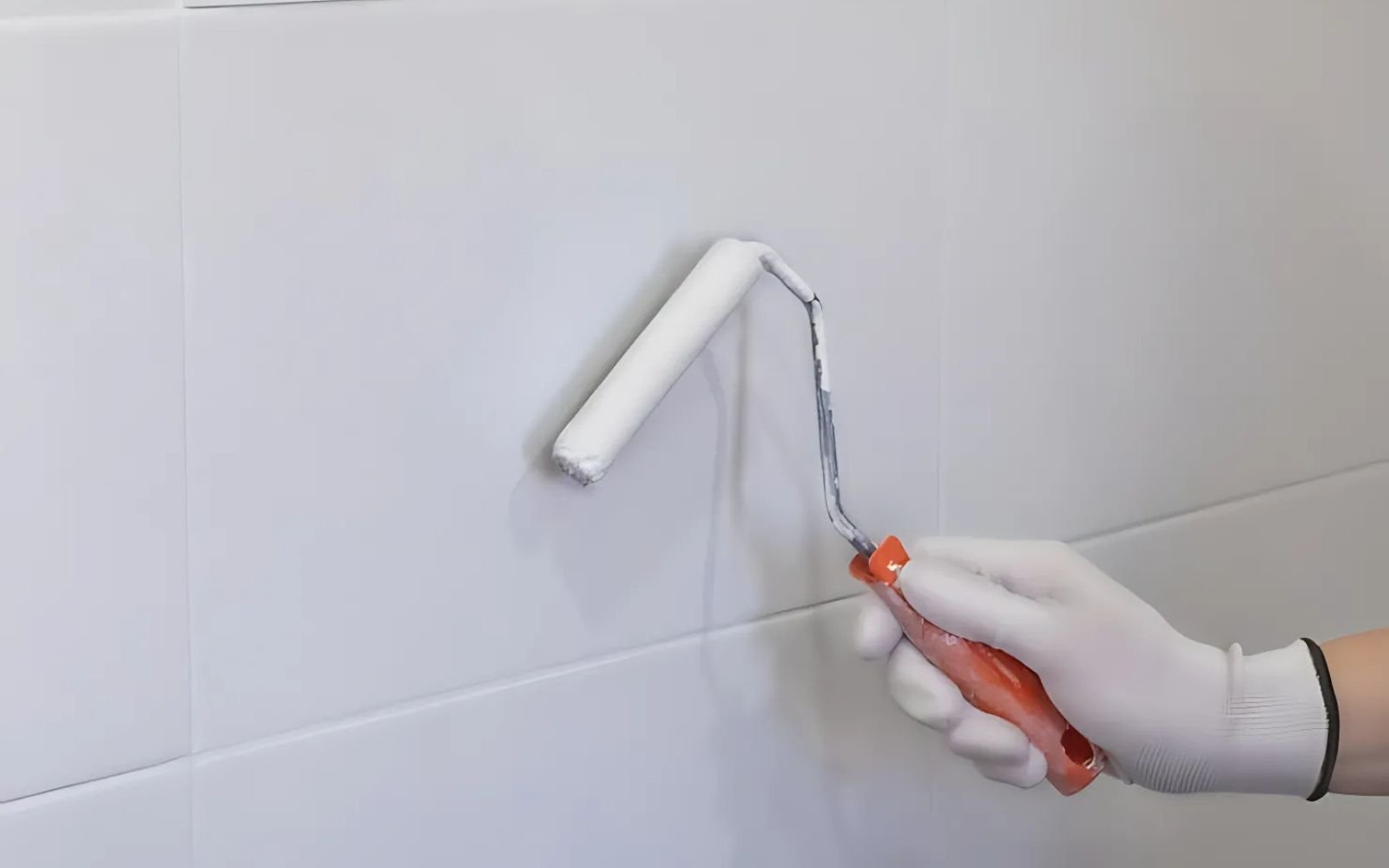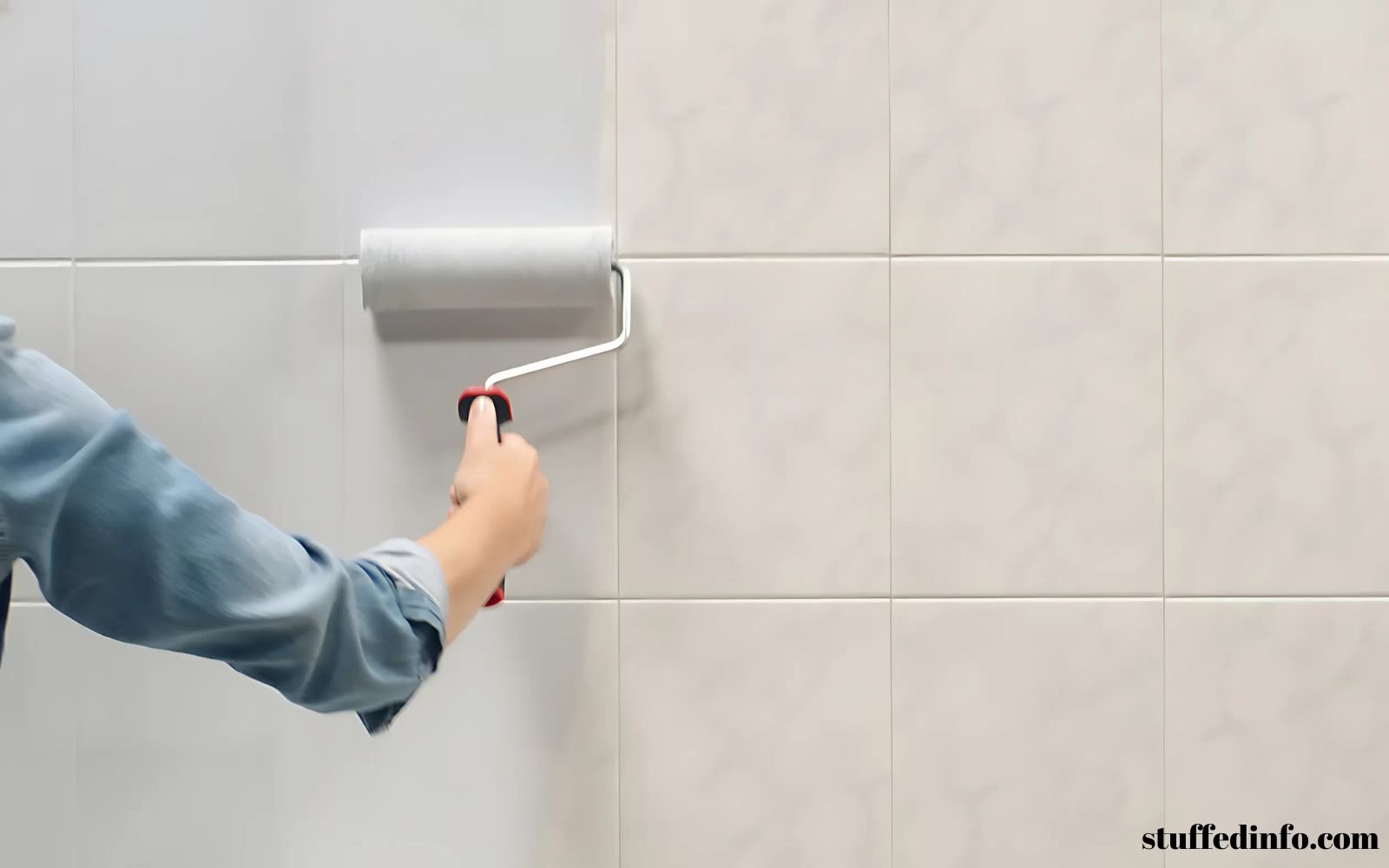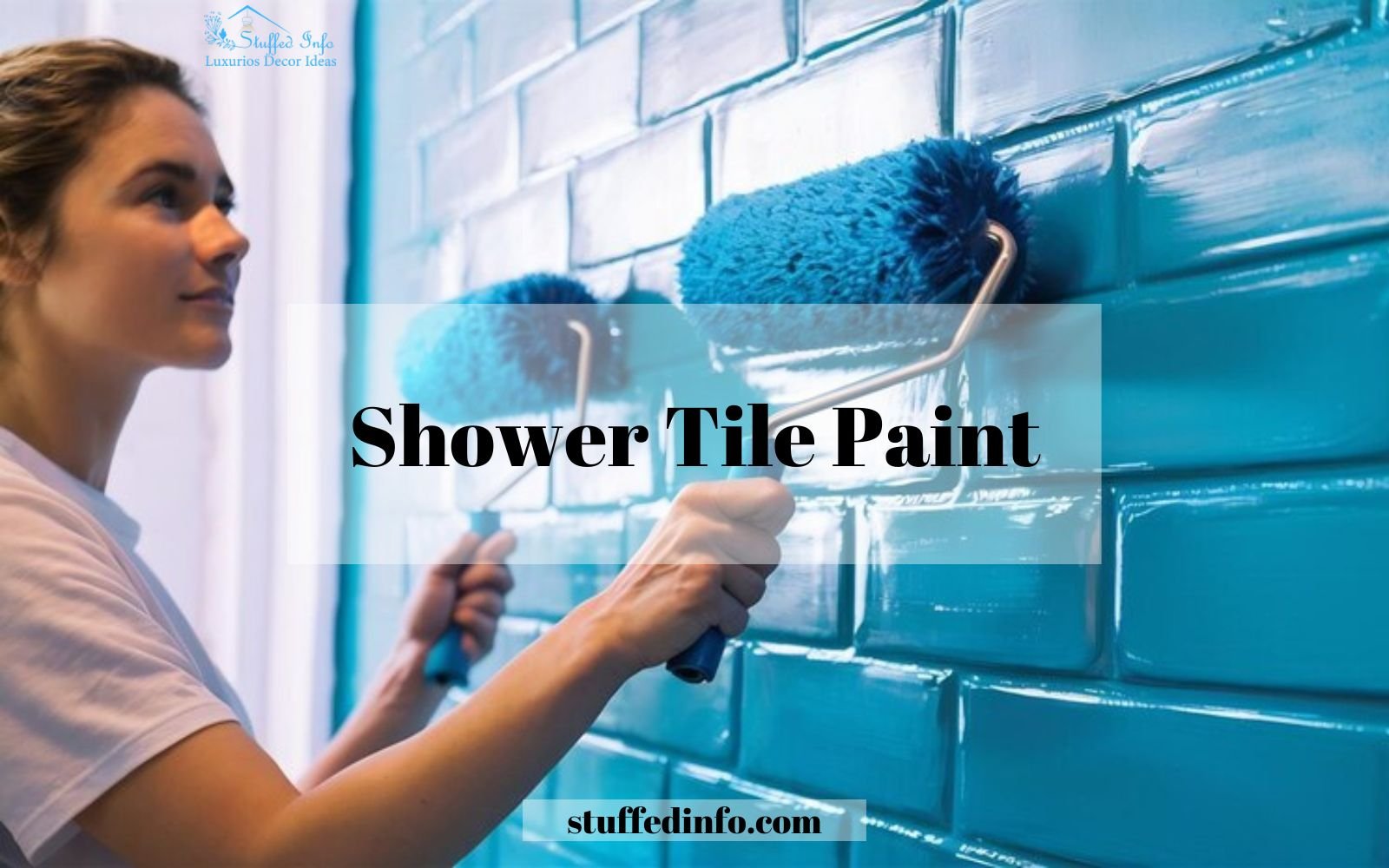Staring at your shower tiles and thinking, “Can slapping on some paint give them a fresh look?” Sprucing up shower tiles with paint seems like an easy-on-the-wallet solution for a bathroom makeover. But does shower tile paint hold up? Let’s dive into the details and see what kind of paint will stick to tile, painting it the right way, and the pros and cons of going for it.
Table of Contents
ToggleWhat Kind of Paint Should You Use for Shower Tiles?
If you’re planning to give your shower tiles a new coat, you can’t just slap on any old paint. It’s should be durable, water-resistant, and at the same time do not chip in all the steam and splashes. So here are a couple of high-adhesion paints for shower tiles you might want to check out:
- One-Part Epoxy Paint: This paint dries in air and is easy to use. It doesn’t need many coats, making it a good pick for people who like to do things themselves.
- Two-Part Epoxy Paint: Now, if you’re aiming for something that sticks around for ages, then two-part epoxy is the way to go. You mix two parts together to get a finish that stands up to wear and tear.
Each variety has its perks, but picking the most suitable one boils down to your needs and the effort you’re willing to invest.
Do Shower Tile Paints Need A Primer?
Yes, since we are painting the shower area, we want the paint to stay longer, even when exposed to water frequently. So, shower tile paint is a two-process paint.
- Bonding Primer: Start with a bonding primer made to stick to tiles. It creates a tough connection between the surface and the paint, which helps prevent peeling or flaking.
- Top Coat: Then, you add a top coat. This gives you a surface that can take a lot of abuse.
Pro Tip: Don’t use primers for concrete, masonry, or metal.

How to Paint Shower Tiles Correctly?
Once you’re sure painting your shower tiles will work, let’s get into the steps. Proper tile painting method holds the secret to a long-lasting finish and also to how long do painted tiles last.
Step 1: Clean the Tiles
- Mix TSP (Trisodium Phosphate) with hot water for breaking down grease and grime.
- Start scrubbing tiles, beginning from the upper part and replace the dirty solution when you must. Rinse with new water and give it time to air dry.
Step 2: Fix Tile and Grout
- Squeeze some caulk into minor cracks and chips to patch them; for serious damage, go with some waterproof putty. Ensure the grout looks sound.
- Fix tiny patches with grout filler tubes or take out the wrecked grout.
Step 3: Sand and Rinse
- Grab that handheld orbital sander and go to town on the glaze with sandpaper ranging from #100 to #150 grit.
- After you’re done sanding, give the area a good rinse with water and swipe it down with a tack cloth to pick up any lingering dust.
Step 4: Shield Areas You Don’t Want To Paint
Get your hands on some painter’s tape and plastic sheets to keep those fixtures, walls, and floors spotless.
Step 5: Lay Down the Bonding Primer
- Whip out a roller and apply a skinny layer of bonding primer on those tiles. Hold your horses for about 4 hours to let it dry.
- Slap on another skimpy layer for even stickier adhesion and leave it alone to set ’til morning.
Step 6: Paint the Tiles
- To start off with painting and infuse some cool designs, go wild using stencils, sponges, or the trusty painter’s tape.
- Next up, get that roller or brush working and lay down some thin layers of color. Wait it out—a whole night or at least 12 hours before you slap on another layer.
- Time for round two with that coat of paint, and yep, you guessed it—give it another 12 hours to set.
- If you think it needs more oomph, don’t be shy to add a third layer.
Step 7: Add a Sealer
Once everything’s solid and dry, which takes about a day or two, show your artwork some love with a double dose of polyurethane sealer. Hold off on running any water for 3 to 7 days.
Make sure you follow these steps if you want your tiles to look awesome and last super long.

Does Shower Tile Paint Last?
Now if you are wondering: is the paint going to last or chip in a shower with all that moisture and steam? Yes, paint in shower tiles can last but it depends on the following things:
- Quality of Paint: The kind of paint used for shower tile will impact how long it lasts. So, go for high-quality epoxy tile paints in damp areas.
- Prep Work: Next, the tile paint will stick better if you prep those tiles right before painting. Make sure you scrub and roughen them up a bit before applying the paint to ensure it sticks well.
- Using a Sealant: Don’t forget to use a waterproof sealant to keep water and soap scum at bay.
- Keep It Clean: Treat your painted tiles gently with soft cleaning, and they’ll stay looking great for a long time.
Following these tips can help your painted shower tiles stay bright and durable.
How Long Do Painted Tiles Last?
So, here’s the deal: how long does shower tile paint really stick around? Generally, shower tile paint lasts anywhere from 6 months to 2 years. With some solid maintenance and high-quality materials, though, they can hang in there for even longer.
Painting Shower Tiles: Pros & Cons
Alright, let’s jump into whether painting your shower tiles is a smart choice. Since you’re investing time and cash, it’s important to also consider the downsides. Here’s the scoop:
Pros of Painting Your Shower Tiles
Painting shower tiles comes with a bunch of perks. Let’s check them out:
- Saves You Money: New tiles can empty your wallet, but painting is a budget-friendly way to achieve awesome results without breaking the bank.
- Quick Fix: If you need a speedy bathroom makeover, then shower tile paint works best for you. A fresh paint job can instantly refresh your tiles!
- Lets You Get Creative: Plus, painting opens up possibilities to customize your space to fit your vibe.
- Eco-Friendly Choice: Also, installing new tiles creates more waste. So, painting them instead helps reduce trash.
- DIY Friendly: Forget the pro fees; just grab your supplies, and you’re good to take this project on yourself.
- Paint Without Demolition: Dodge the mess and hassle of tearing out old tiles. A new coat of paint skips all that stress.
So, painting shower tiles definitely has its upsides, but we also need to consider the downsides as well.
Cons of Using Shower Tile Paint
Like anything else, this method has its drawbacks. Before you dive in, here’s the lowdown:
- Durability Issues: Paint on tiles can chip or peel in areas that see a lot of water.
- Water Problems: Even with a sealant, constant dampness might lead to issues as time passes.
- Long Prep Work: Cleaning, sanding, and priming the tiles takes some serious time and patience.
- Short-Term Fix: Most painted tiles need touch-ups after a few years, so it’s not a long-term solution.
- Color Changes: Cleaning products or rough scrubbing can cause colors to fade over time.
- Hard to Undo: Once you’ve painted tiles, it’s a pain to restore them to their original look if you have regrets.
Getting the hang of these downsides will help you weigh the pros and cons of painting shower tiles. So you can decide if it’s a smart move to paint your shower tiles.
Tips to Maintain Painted Shower Tiles
If you want your painted tiles to stay looking fresh over time, you have to put in a bit of effort. Just check out the tips below and shower tile paint is sure to do its thing and hold up longer
- Take It Easy with Cleaning Products: Ditch the harsh cleaners if you want to keep the paint in good shape.
- Keep It Tidy: Prevent soap scum and mold from piling up.
- Dry the Tiles Off: Wipe away any excess water every time you use them.
- Let the Air Move: Reduce moisture with a vent fan.
- Fix Stuff Quickly: Address any chips or scratches ASAP to stop them from getting worse.
These tips can really help your painted tiles last longer and continue looking beautiful.
Conclusion
Hopefully it’s clear that whether shower tile paint actually works for you really comes down to paint used and how much work you’re ready to put in. Looking to give your bathroom a little boost without dropping a ton of cash or going through a full-on renovation? Shower tile paint might be just the ticket. Just keep in mind that you gotta prepare, apply, and take care of it. If you can pull that off, you could end up with an awesome finish that’s easy on your budget. A fresh new bathroom could be one coat of paint away!
FAQ
- Can you skip primer when painting shower tiles?
Skipping primer is not recommended because it bings the paint with tiles. Therefore, chances of paint chipping becomes less.
- Can you paint over existing tile in a shower?
Yes, you can paint over existing tiles Painted tiles are less durable than new tiles. As such lots of touch-ups would be required over time.
- Is it safe to use shower tile paint in a small bathroom?
Yes, it is safe to use shower tile paint in a small bathroom as long as you ensure proper ventilation during and after application.







